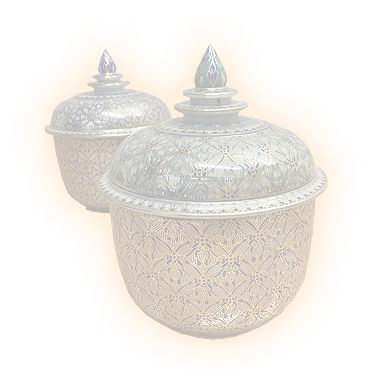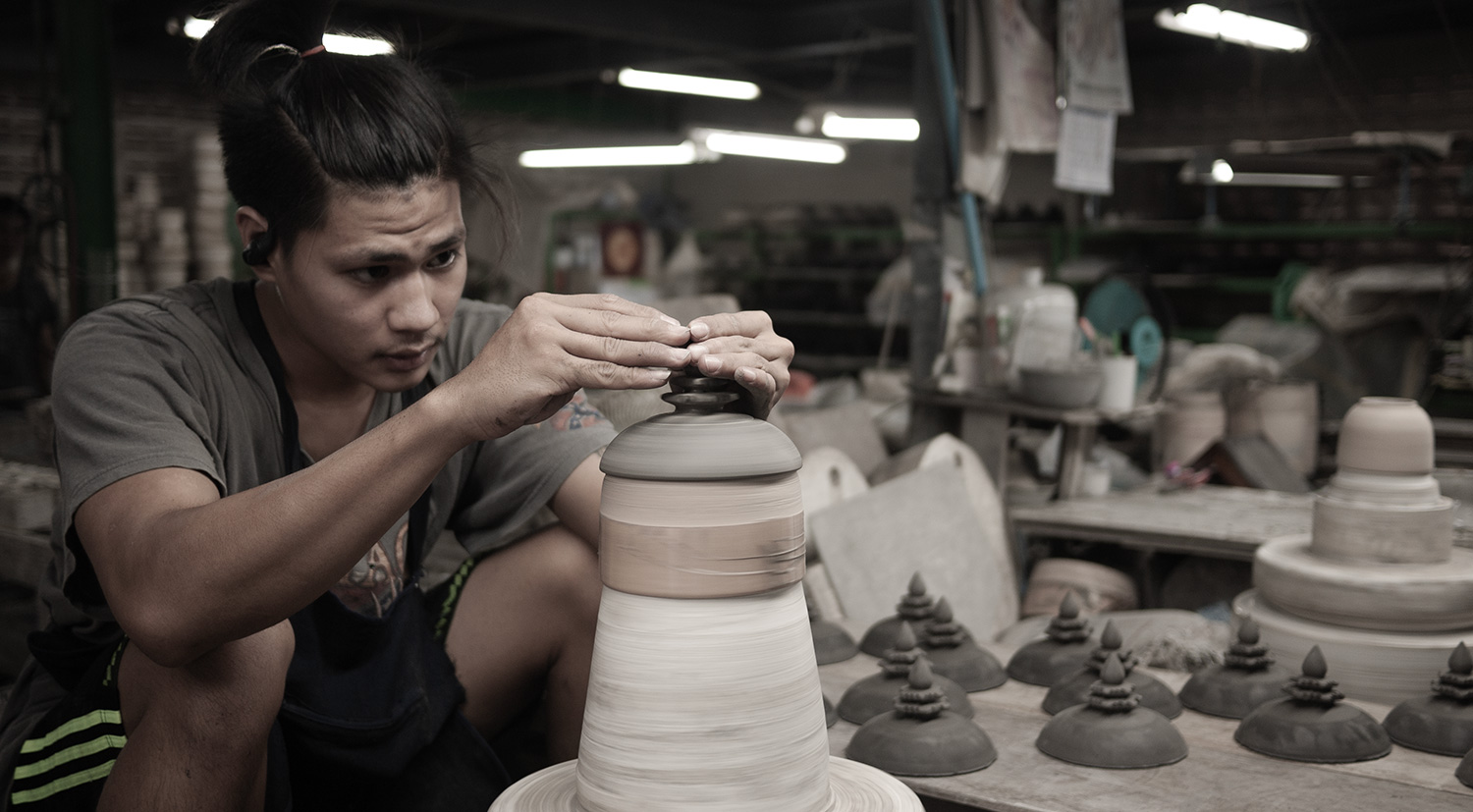BENJARONG, Noble Five Colors Porcelain
Even after 600 years,
Embodying the pursuit of beauty will never fade.
It is the essence of Thai culture
And stands as a cherished traditional craft
Representing the country's rich heritage.




BENJARONG means "five colors" in ancient Sanskrit.
It is said to have its origins in the Ming Dynasty of China. About 600 years ago, a princess from China brought gorgeous porcelain to the Ayutthaya dynasty, which was used only by the emperor. This porcelain, originally reserved solely for the emperor, captivated the King of Ayutthaya with its beauty. In response, he sent potters to China to study the craft, importing the Chinese-made pottery.
Thai artisans eventually developed their own distinctive style, leading to the creation of BENJARONG porcelain. Evolving from the three-colored tradition of China, BENJARONG showcased five vibrant hues. Exclusively intended for the royal family and aristocracy, BENJARONG porcelain were treasured heirlooms, cherished and passed down through generations.
At the time, Ayutthaya flourished as one of Asia's largest trading centers, attracting merchants from across the globe and serving as a crossroads of diverse cultures, including Khmer, European, Persian, Indian, and Chinese. It is said that Japan Town also flourished. It is believed that as a result of this influence, BENJARONG 's designs became more gorgeous and its techniques became more elaborate over time.
The pursuit of beauty continued from the Ayutthaya dynasty to the Thonburi and Chakri dynasties. In the 19th century, King Rama V, known as the great king Chulalongkorn, sent artisans to England to learn bonechina techniques. These craftsmen have passed on BENJARONG's techniques to the next generation, guarding them for generations.
Under the reign of King Rama Ⅸ, ordinary people beyond royalty and aristocrats were finally allowed to own BENJARONG. It has only been over 60 years since everyone has been able to enjoy the beauty of BENJARONG.
Embodying the pursuit of beauty, BENJARONG is the essence of Thai culture and stands as a cherished traditional craft representing the country's rich heritage.
In 1979, my father, Tsutomu Nomura, a ceramic engineer from Japan, decided to leave his job at a long familiar company and start his own BENJARONG business in Bangkok.
He was captivated by the beauty of the BENJARONG he saw while at an antique tour in Bangkok and had a strong desire to create this beautiful porcelain.
At that time, his knowledge of kilns, cultivated through his work as an engineer, fueled his desire to take on this challenge.
Driven by a determination to find sponsors, a store location, and train artists in the intricate craft of BENJARONG, Thai Isekyu origins trace back to those early days of ambitious pursuit.
Since our founding, we've remained committed to sourcing high-quality raw materials imported from Japan.
Collaborating closely with our talented artists, we continuously craft designs that reflect the times, all stemming from desire to create authentic products.
Just like its hand-painted colors, our enduring passion for BENJARONG, instilled by our founder, will never fade.
Leading a colorful and rich life has been a timeless pursuit for humanity, echoed even by ancient nobles through their admiration of vibrant porcelain.
While we may be in an era of simple and natural designs, BENJARONG teaches us the beauty of blending tradition with innovation and reminds us that we can all benefit from adding a little color into our lives.
Committed to this rich heritage, we are dedicated to continuing the tradition of producing the highest.
Managing Director

The Benjarong wine glass was finally born by inheriting the technology that has been continuously manufactured in KUTANI Ware in Japan since 2008. They succeeded in creating a strong joint between glass and porcelain, which is said to be the most difficult process. Thai Isekyu had formed partnership with Kaburaki Shoho in Kanazawa and start manufacturing same wine glasses designed by Benjarong.
The glasses are cut with approval from prestigious European brands such as Riedel and Spiegelau, and the joints are specially manufactured using Kanazawa KUTANI Ware's patented technology.
This is the only original glass in the world, with each design hand-finished by Thai Isekyu Benjarong.
It is truly the ultimate collaboration between Thailand and Japan, and is the only wine glass in the world that is a crossover between East and West.
We accept orders for this glass as a made-to-order product.
We hope you will enjoy it as a precious gift for someone special.
*The wineglass is produced under the following Japanese petty patent,(1)U3146062 and (2)U2024-003190

Open 9:00 - 17:00
Close New Year & Songkran holidays
TEL (+66)2-252-2509, 2510
E-mail info@th-isekyu.com
1/16 Soi 10 Sukhumvit Rd., Klongtoey, Bangkok 10110